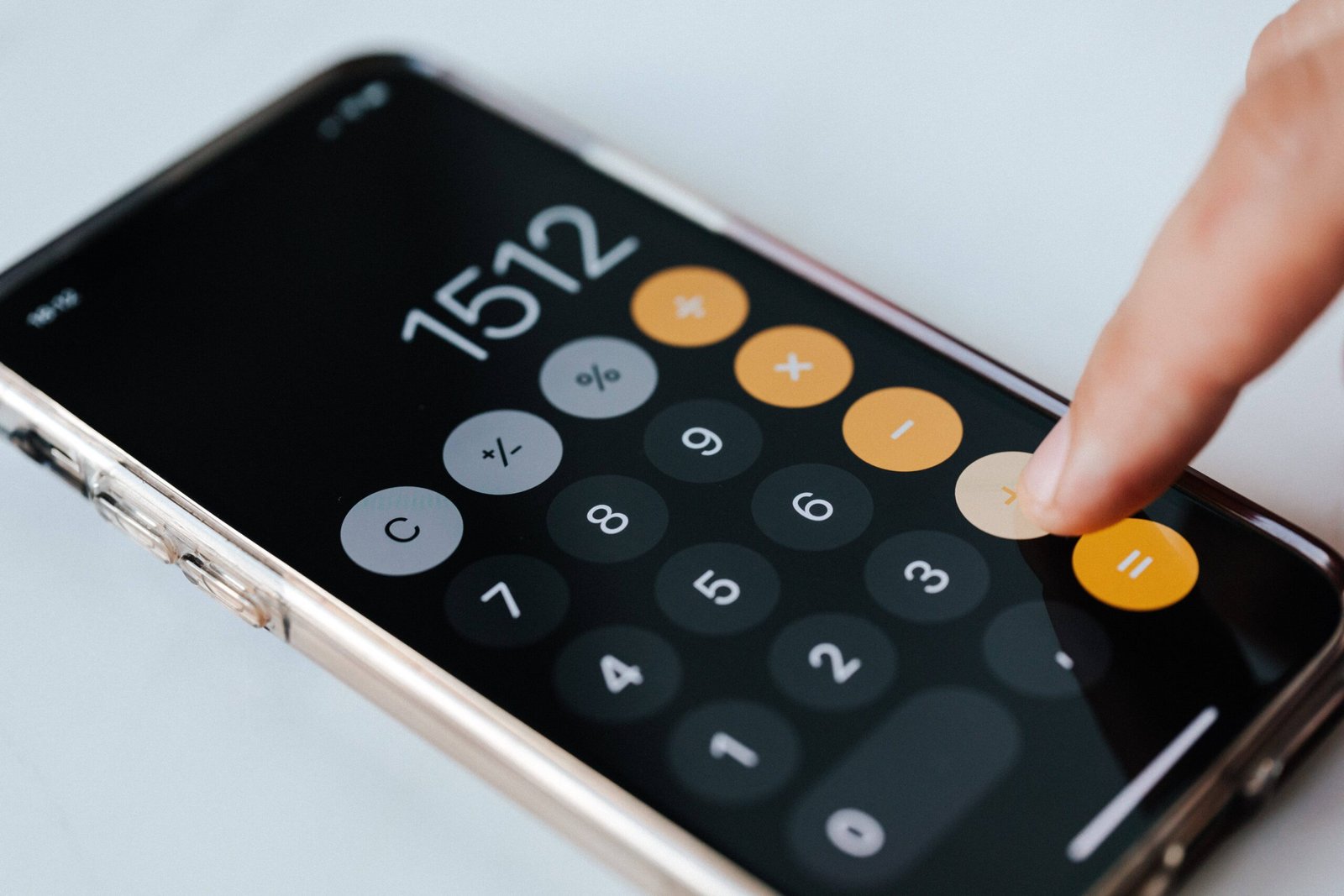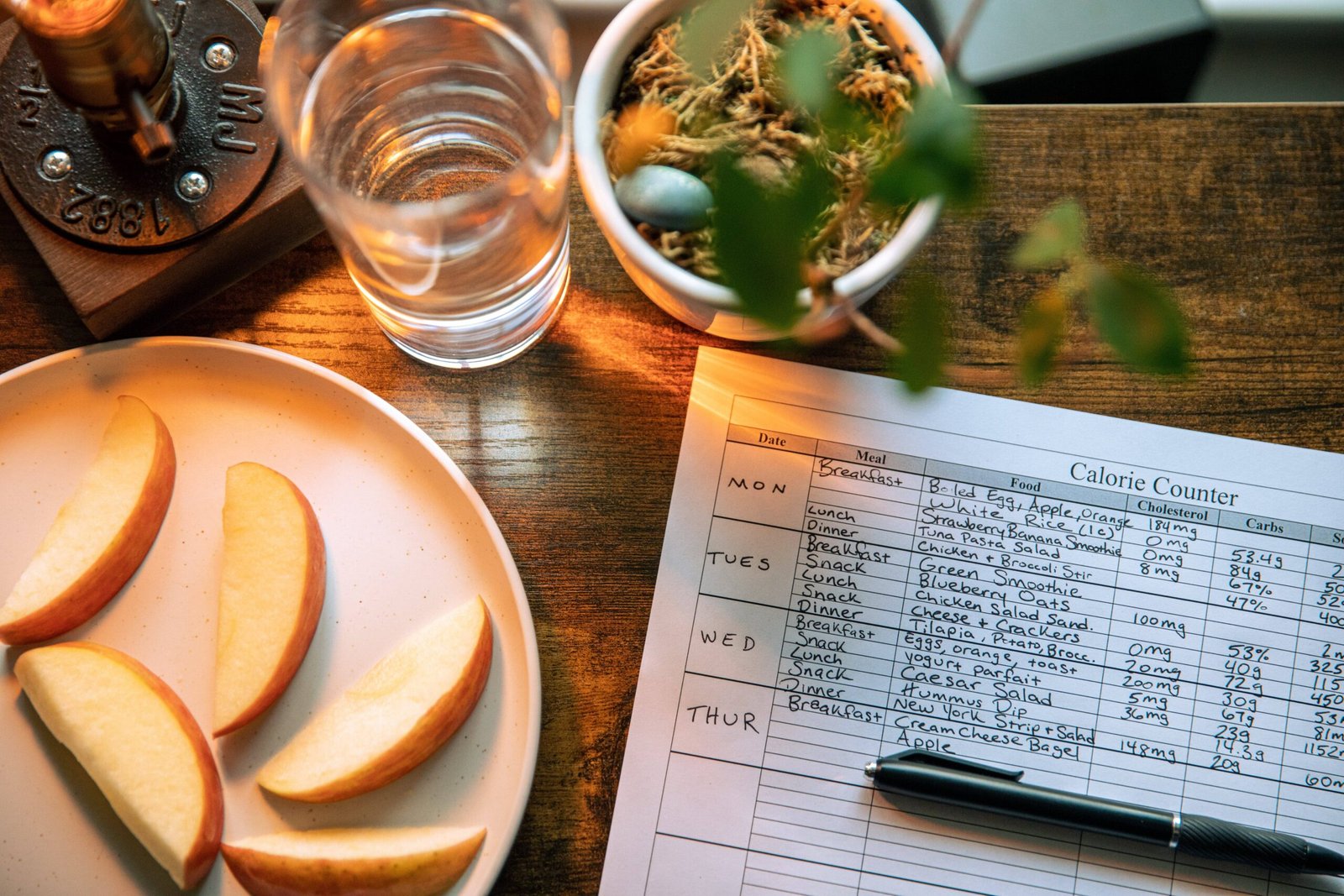
Losing weight can be challenging, especially if you don’t know how many calories you should eat per day to achieve your goal. A calorie calculator can help you estimate your calorie needs based on your age, sex, size, and activity level. By creating a calorie deficit, which means consuming fewer calories than you burn, you can lose weight in a healthy and sustainable way. In this article, we will explain what a calorie calculator is, how to use it, and what other factors you should consider when trying to lose weight.
Table of Contents
What is a calorie calculator and how does it work?
A calorie calculator is a tool that estimates the number of calories you need to maintain your current weight, based on your personal characteristics and lifestyle. It usually uses a mathematical formula that takes into account your basal metabolic rate (BMR), which is the amount of energy your body uses at rest, and your physical activity level (PAL), which is the amount of energy your body uses during movement.
One of the most commonly used formulas is the Mifflin-St Jeor equation, which calculates your BMR as follows ( 1 ):
- For people assigned female at birth (AFAB): BMR = 10 x weight (kg) + 6.25 x height (cm) – 5 x age (years) – 161
- For people assigned male at birth (AMAB): BMR = 10 x weight (kg) + 6.25 x height (cm) – 5 x age (years) + 5
To estimate your PAL, you can use the following table, which assigns a value to different levels of activity ( 2 ):
| Activity level | Description | PAL value |
|---|---|---|
| Sedentary | Little or no exercise | 1.2 |
| Lightly active | Light exercise or sports 1-3 times per week | 1.375 |
| Moderately active | Moderate exercise or sports 3-5 times per week | 1.55 |
| Very active | Hard exercise or sports 6-7 times per week | 1.725 |
| Extremely active | Very hard exercise or sports, or physical job | 1.9 |
To calculate your total daily energy expenditure (TDEE), which is the number of calories you need to maintain your current weight, you simply multiply your BMR by your PAL value. For example, if you are a 30-year-old AFAB person who weighs 70 kg, is 165 cm tall, and is moderately active, your BMR is 1446.25 calories and your PAL value is 1.55. Therefore, your TDEE is 1446.25 x 1.55 = 2241.59 calories.
To use a calorie calculator, you just need to enter your details, such as your age, sex, weight, height, and activity level, and the calculator will do the math for you. You can also adjust the number of calories based on your goal, whether you want to lose, gain, or maintain weight.
How to use a calorie calculator to lose weight
To lose weight, you need to create a calorie deficit, which means consuming fewer calories than you burn. A calorie calculator can help you determine how many calories you should eat per day to achieve a certain weight loss rate. A safe and realistic weight loss rate is about 0.5-1 kg (1-2 pounds) per week, which requires a daily calorie deficit of about 500-1000 calories ( 3 ).
For example, if you are a 30-year-old AFAB person who weighs 70 kg, is 165 cm tall, and is moderately active, your TDEE is 2241.59 calories. To lose 0.5 kg per week, you need to eat about 1741.59 calories per day. To lose 1 kg per week, you need to eat about 1241.59 calories per day.
However, these numbers are only estimates, and they may vary depending on other factors, such as your genetics, hormones, metabolism, body composition, and health status. Therefore, it is important to monitor your weight and adjust your calorie intake accordingly. You can use a calorie tracker app or a food diary to keep track of your calories and nutrients.
How many calories I need per day?
The number of calories an individual needs per day depends on several factors, including age, gender, weight, height, activity level, and overall health goals. The two primary components influencing calorie needs are basal metabolic rate (BMR) and physical activity level.

- Basal Metabolic Rate (BMR): BMR represents the number of calories your body needs at rest to maintain basic physiological functions such as breathing, circulation, and cell production. It is influenced by factors like age, gender, weight, and height.
- Physical Activity Level (PAL): The calories required for physical activities vary based on your daily movements, exercise routine, and overall activity level.
To estimate your daily calorie needs, you can use the following general guidelines:
- Calculate BMR:
- For men: BMR = 88.362 + (13.397 x weight in kg) + (4.799 x height in cm) – (5.677 x age in years)
- For women: BMR = 447.593 + (9.247 x weight in kg) + (3.098 x height in cm) – (4.330 x age in years)
- Multiply BMR by Activity Factor (PAL):
- Sedentary (little or no exercise): BMR x 1.2
- Lightly active (light exercise/sports 1-3 days/week): BMR x 1.375
- Moderately active (moderate exercise/sports 3-5 days/week): BMR x 1.55
- Very active (hard exercise/sports 6-7 days a week): BMR x 1.725
- Extremely active (very hard exercise/sports & physical job or 2x training): BMR x 1.9
This will give you an estimate of the total calories you need to maintain your current weight. To lose weight, you would typically aim for a calorie intake below this total, and to gain weight, you would aim for a calorie intake above this total.
Keep in mind that these are general calculations, and individual variations exist. It’s advisable to consult with a healthcare professional or a registered dietitian for personalized advice based on your specific circumstances, health goals, and any underlying medical conditions.
How to calculate calories in food?
To calculate the calories in food, you can use the following general steps:
- Refer to Food Labels:
- Many packaged foods have nutritional information on the label, including the number of calories per serving. Pay attention to the serving size, as the calorie content is based on that portion.
- Use Online Databases:
- Online databases and apps provide nutritional information for a wide range of foods. You can search for the specific food item and find its calorie content. Websites like the USDA National Nutrient Database, MyFitnessPal, or nutrition labels on packaged foods can be helpful.
- Weigh and Measure:
- For foods without labels, especially fresh and whole foods, you can use a kitchen scale or measuring cups to weigh or measure the ingredients. Once you have the quantity, you can then refer to a food database or use nutritional information provided on packaging for similar items.
- Calculate Homemade Recipes:
- If you are preparing a homemade dish, you can calculate the total calories by adding up the calories in each ingredient based on the quantity used. This involves multiplying the amount of each ingredient by its calorie content per unit (usually per gram or per serving) and then summing up the total.
Remember to account for any added oils, sauces, or other ingredients that contribute to the overall calorie content.
It’s essential to note that these methods provide estimates, and variations can occur based on factors such as cooking methods and ingredient quality. Additionally, if you have specific dietary concerns or are following a particular diet plan, consulting with a registered dietitian can provide more accurate and personalized guidance.
What else to consider when trying to lose weight
Using a calorie calculator can be a useful tool to help you lose weight, but it is not the only factor that matters. You also need to consider the quality and timing of your food, your hydration, your sleep, your stress, and your exercise. Here are some tips to help you lose weight in a healthy and sustainable way:
- Choose nutrient-dense foods that are rich in protein, fiber, healthy fats, vitamins, and minerals, such as lean meats, eggs, fish, dairy, nuts, seeds, beans, fruits, vegetables, and whole grains. These foods will keep you full and satisfied, and provide you with the energy and nutrients you need.
- Avoid or limit processed foods that are high in calories, sugar, salt, and unhealthy fats, such as fast food, junk food, sweets, pastries, sodas, and alcohol. These foods will spike your blood sugar and insulin levels, and promote fat storage and inflammation.
- Eat regular meals and snacks, and avoid skipping breakfast. Eating at consistent times will help you regulate your appetite and metabolism, and prevent overeating and cravings. Aim for three balanced meals and one or two healthy snacks per day, depending on your needs and preferences.
- Drink plenty of water and stay hydrated. Water is essential for your body’s functions, and it can also help you control your hunger and calorie intake. Aim for at least 2 liters (8 cups) of water per day, and more if you exercise or sweat a lot. You can also drink other fluids, such as tea, coffee, or low-calorie beverages, but avoid sugary drinks and alcohol.
- Get enough sleep and manage your stress. Sleep and stress affect your hormones, appetite, metabolism, and mood, and they can have a significant impact on your weight. Lack of sleep and chronic stress can increase your levels of cortisol, a hormone that stimulates your appetite and promotes fat storage, especially around your belly. Aim for 7-9 hours of quality sleep per night, and practice some relaxation techniques, such as meditation, yoga, or breathing exercises, to cope with stress.
- Exercise regularly and include both aerobic and resistance training. Exercise can help you burn calories, build muscle, improve your cardiovascular health, and boost your mood and self-esteem. Aerobic exercise, such as walking, running, cycling, or swimming, can increase your heart rate and oxygen consumption, and help you burn fat. Resistance training, such as lifting weights, doing push-ups, or using resistance bands, can increase your muscle mass and strength, and help you maintain your metabolism and bone density. Aim for at least 150 minutes of moderate to vigorous aerobic exercise and 2-3 sessions of resistance training per week, and vary your activities to avoid boredom and injury.
A calorie calculator can help you estimate your calorie needs based on your age, sex, size, and activity level. By creating a calorie deficit, which means consuming fewer calories than you burn, you can lose weight in a healthy and sustainable way. However, you also need to consider the quality and timing of your food, your hydration, your sleep, your stress, and your exercise, as they can affect your weight and health. By following these tips, you can achieve your weight loss goal and improve your well-being.



